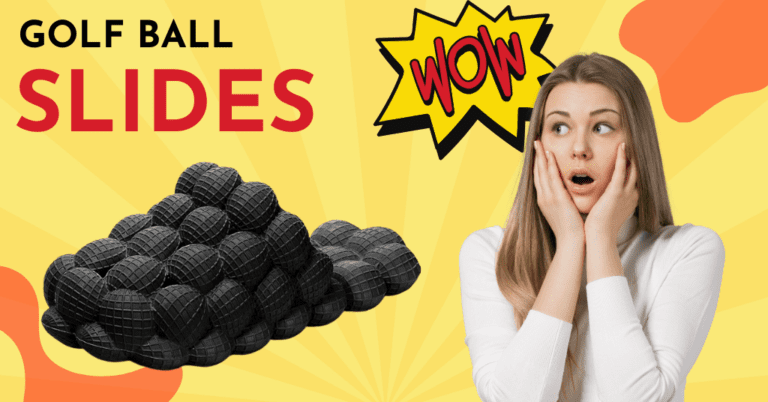Today, we bring you one of the sweetest revolutions in the world of golf. A fascinating innovation that combines the sport’s heritage with the delectable essence of nature. In this blog, we delve into the intriguing concept of “golf balls filled with honey” – a once game-changing idea that’s buzzing with excitement lately.
- Are Golf Balls Filled with Honey?
- The Evolution of Golf Balls and Honey-Filled Golf Balls
- The Concept of Golf Balls Filled with Honey
- The Science Behind Honey Filled Golf Balls
- Environmental Considerations
- Challenges, Market Viability, and Consumer Perception for Golf Balls Filled with Honey
- People Also Ask
- Final Words
Are Golf Balls Filled with Honey?
Imagine if your favorite golf balls were infused with the golden goodness of honey. Yes, you heard it right. The legendary golfer Walter Hagen’s love for honey inspired this ingenious concept, and we’re here to explore the potential benefits and challenges it presents.

From enhanced performance on the greens to a reduced environmental footprint, honey-filled golf balls were promised to elevate your game and the planet. But can this extraordinary concoction really work wonders, or is it merely a sticky situation waiting to unfold? Join us on this captivating journey as we unlock the science behind golf balls filled with honey.
The Evolution of Golf Balls and Honey-Filled Golf Balls
Throughout the centuries, golf balls have undergone a remarkable transformation, evolving from rudimentary beginnings to the sophisticated spheres with speed dimple patterns we know today. From primitive leather pouches to the resilient rubber cores that dominate the modern fairways, each stage has seen golfers strive for better performance and consistency.


Initially, golf balls were handcrafted, their cores made from tightly wound feathers wrapped in leather. As golf gained popularity, the hunt for improved design led to the advent of the rubber-cored ball, revolutionizing the sport. The introduction of dimples further refined aerodynamics, enabling longer and more accurate drives.
As technology advanced, golf balls embraced cutting-edge materials, incorporating synthetic rubber and innovative dual-core designs. But now, enter the intriguing concept of golf balls filled with honey that was introduced 90 years ago.
Step back in time to the captivating era of the wound golf ball, where the quest for the perfect core led to a fascinating array of materials. From steel to oils, water, and even a daring radioactive center, golf ball innovation knew no bounds.
Amidst this whirlwind of experimentation, a game-changing revelation emerged in 1934. The L.A. Young Golf Company proudly unveiled the Walter Hagen Honey Centered golf ball, featuring a center infused with nature’s golden elixir – honey. To top it off, a vulcanized Latex cover sealed the deal, promising a sweet experience on the greens like never before.
As the wound golf ball era paved the way for the solid golf ball’s arrival in the late 1960s, let’s relish the enchanting chapter when honey stole the spotlight and took golfers on a delectable journey through time.
If you are interested in golf balls and reviews, please visit the following links.
- Review of the Best Golf Balls for Kids
- What is a Compression Chart for Golf Balls
- Review of the TP5 Pix Poker Golf Ball
- Review of the Best Soft Golf Balls
- What are Waterlogged Golf Balls
- Review of the Best Callaway Golf Balls
- Review of the Best Srixon Golf Balls
The Concept of Golf Balls Filled with Honey
As golfers strived to perfect their swings and push the boundaries of performance, a sweet revolution took root in the sport – golf balls filled with honey. Inspired by nature’s master pollinator, the humble bee, this novel concept aimed to infuse golf balls with the golden elixir to enhance play like never before.


The allure of honey-filled golf balls was in their potential to revolutionize spin dynamics and control around the greens. Unlike conventional balls with solid cores, honey-filled cores or liquid cores introduced a dynamic and responsive liquid center. This innovation promised to optimize compression, offering golfers unparalleled distance and accuracy.
Imagine the possibility of a golf ball that embraces the essence of nature’s precision, with honey as its secret weapon. But does this intriguing idea hold up on the greens? Let’s delve deeper into the science and craftsmanship behind these sweet spheres, exploring how honey’s fluid magic could redefine the very essence of golf.
The Science Behind Honey Filled Golf Balls
What made honey-filled golf balls stand out on the fairways? It’s all in the science. What made this innovative concept gain traction back in the day?
Honey, renowned for its viscosity and flow behavior, brought a whole new dimension to golf ball design. The liquid cores in these balls adapted to the golfer’s swing, optimizing compression to maximize distance and control. This dynamic responsiveness set them apart from traditional solid-core balls.


Engineers and designers rose to the challenge, seeking the perfect blend of materials to ensure these sweet spheres endure the rigors of the game.
Environmental Considerations
Beyond enhancing gameplay, honey-filled golf balls had a compelling environmental advantage, making them a sweet choice for eco-conscious golfers. In an era where sustainability wasn’t at the center stage, these innovative spheres aimed to reduce the sport’s ecological impact even in the 1930s.
Unlike traditional balls made from synthetic materials that contribute to pollution, honey-filled golf balls offer biodegradability. Once their time on the greens was over, they broke down naturally, ‘Wound Golf Ball’ leaving no harmful residues behind. Can honey-filled golf balls truly live up to the hype on the greens in this age? We don’t know the answer to these yet.
Challenges, Market Viability, and Consumer Perception for Golf Balls Filled with Honey
As with any groundbreaking innovation, honey-filled golf balls did not go without their challenges. From manufacturing intricacies to shelf-life concerns, engineers and designers faced a sticky road to success.
The delicate balance between a durable exterior and a fluid core poses a significant challenge. If we were to make the golf balls filled with honey again, engineers would strive to create a ball that withstands the demands of the game without compromising its performance.


The allure of honey-filled golf balls has ignited curiosity among golf enthusiasts worldwide, but does the market share the same excitement? Evaluating their viability requires a closer look at consumer perception and demand. As eco-friendly initiatives gain momentum, environmentally conscious golfers are keen to embrace this sweet innovation. The potential for reduced environmental impact and improved gameplay is a tantalizing proposition.
People Also Ask
Are golf balls filled with honey?
No, not all golf balls are filled with honey. While some innovative designs were introduced in the 20th century that explored honey-filled cores, all of the golf balls on the market today use conventional materials.
Are some golf balls filled with honey?
Yes, there have been experimental designs of golf balls filled with honey. These unique balls aim to enhance performance and promote eco-friendliness in the sport. One such example is Walter Hagen’s Honey Centered golf balls.
What is a wound golf ball?
A wound golf ball refers to the traditional type of golf ball used from the early 20th century until the late 1960s. It had a rubber core wound with materials like rubber thread. After its life, it showed cracks. Thus, known as a wound golf ball.
Are wounds on a golf ball because of the honey core?
No, the term “wound” in a golf ball does not refer to honey. Instead, it describes the construction method where rubber threads are wound around the core to create tension and improve performance.
Is honey still used in golf balls?
While honey-filled golf balls have been experimented with, they are not used in the mainstream golf ball market. All golf balls still use traditional materials for their cores.
Final Words
As we bid adieu to the world of golf balls filled with honey, one thing is clear – the intersection of nature and innovation could have created an exciting frontier for the game. While challenges persist, the potential benefits in performance and eco-friendliness are hard to ignore.
Whether honey-filled golf balls become a staple on the greens remains to be seen, but their impact on the sport’s future cannot be underestimated. So, golfers, brace yourselves for a sweet surprise and keep an eye out for these tantalizing spheres that might just change the way you play the game forever.





